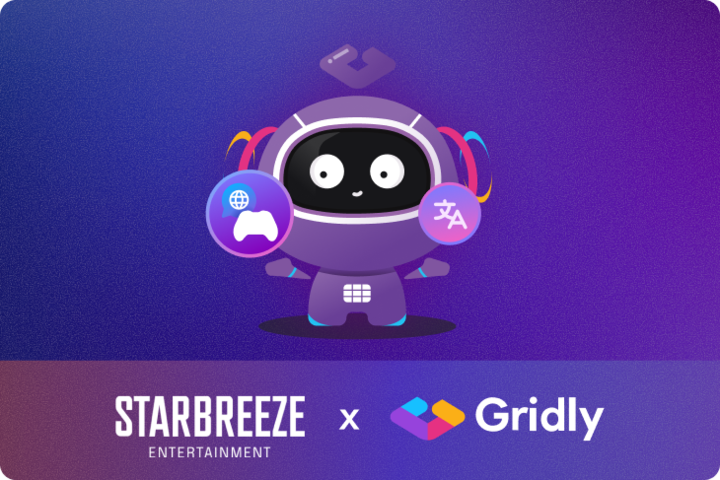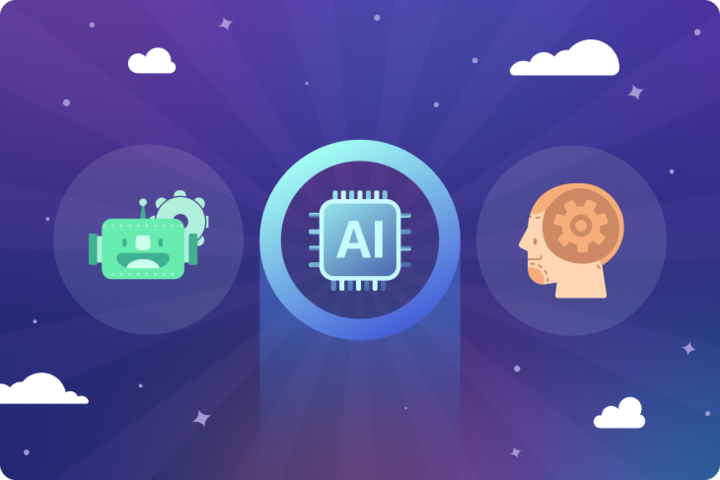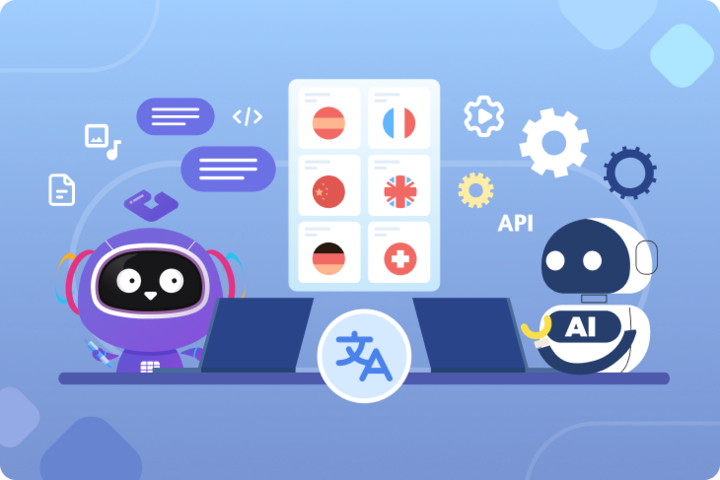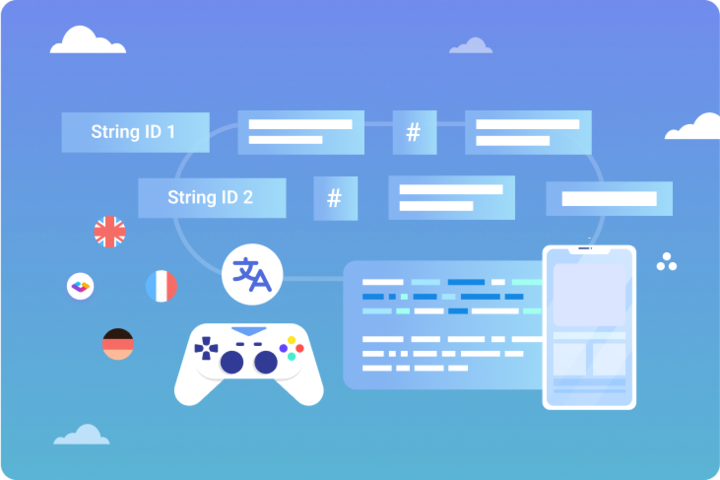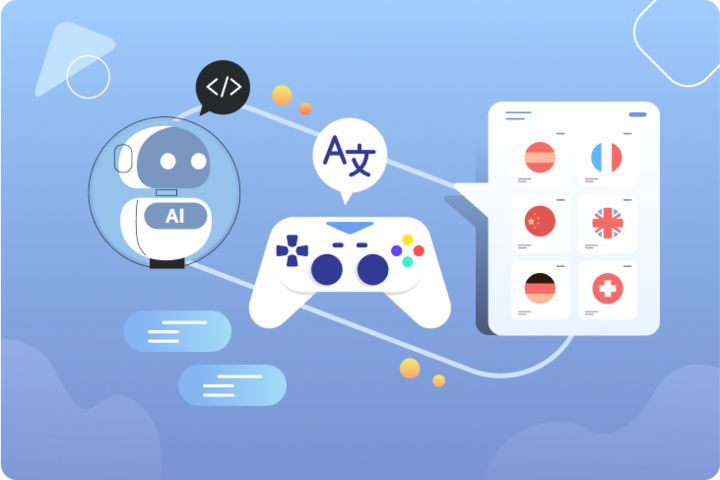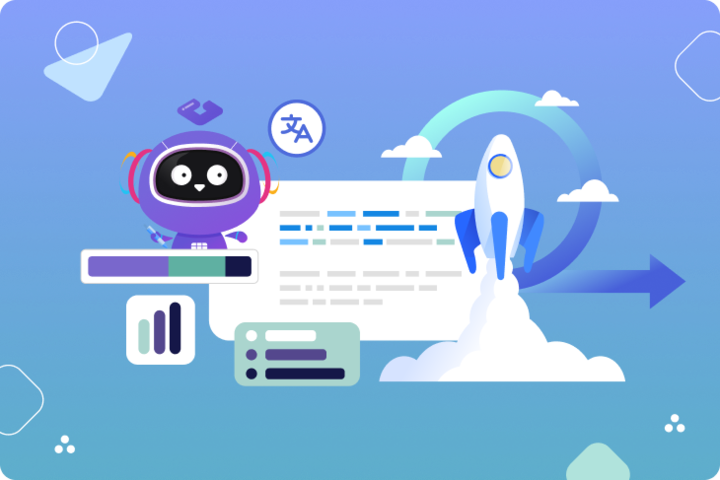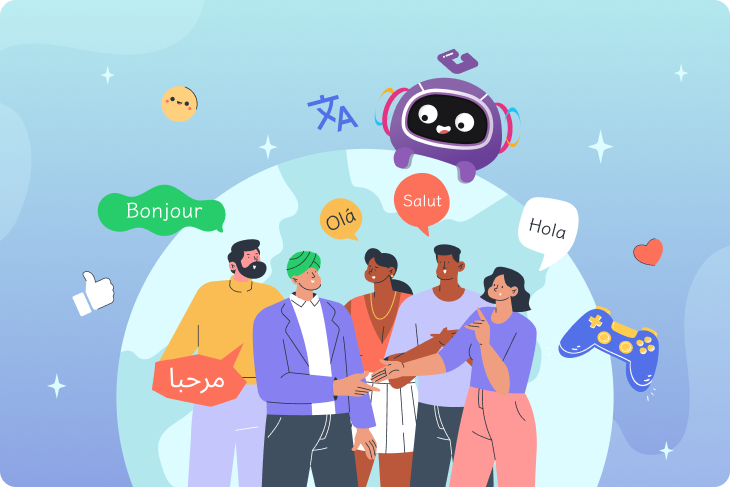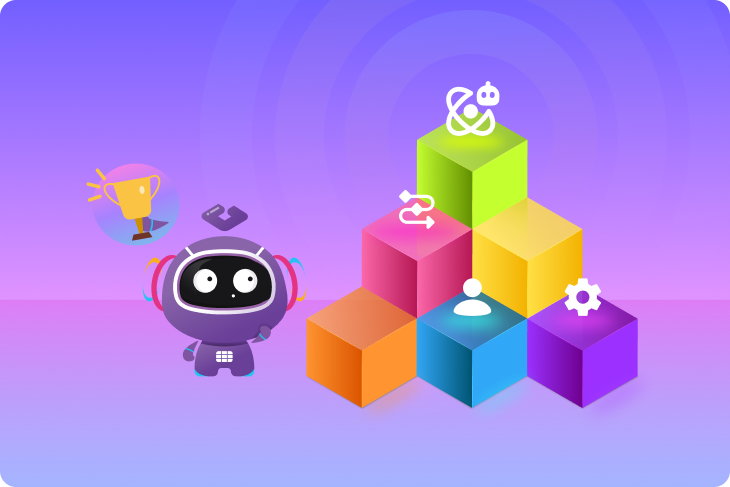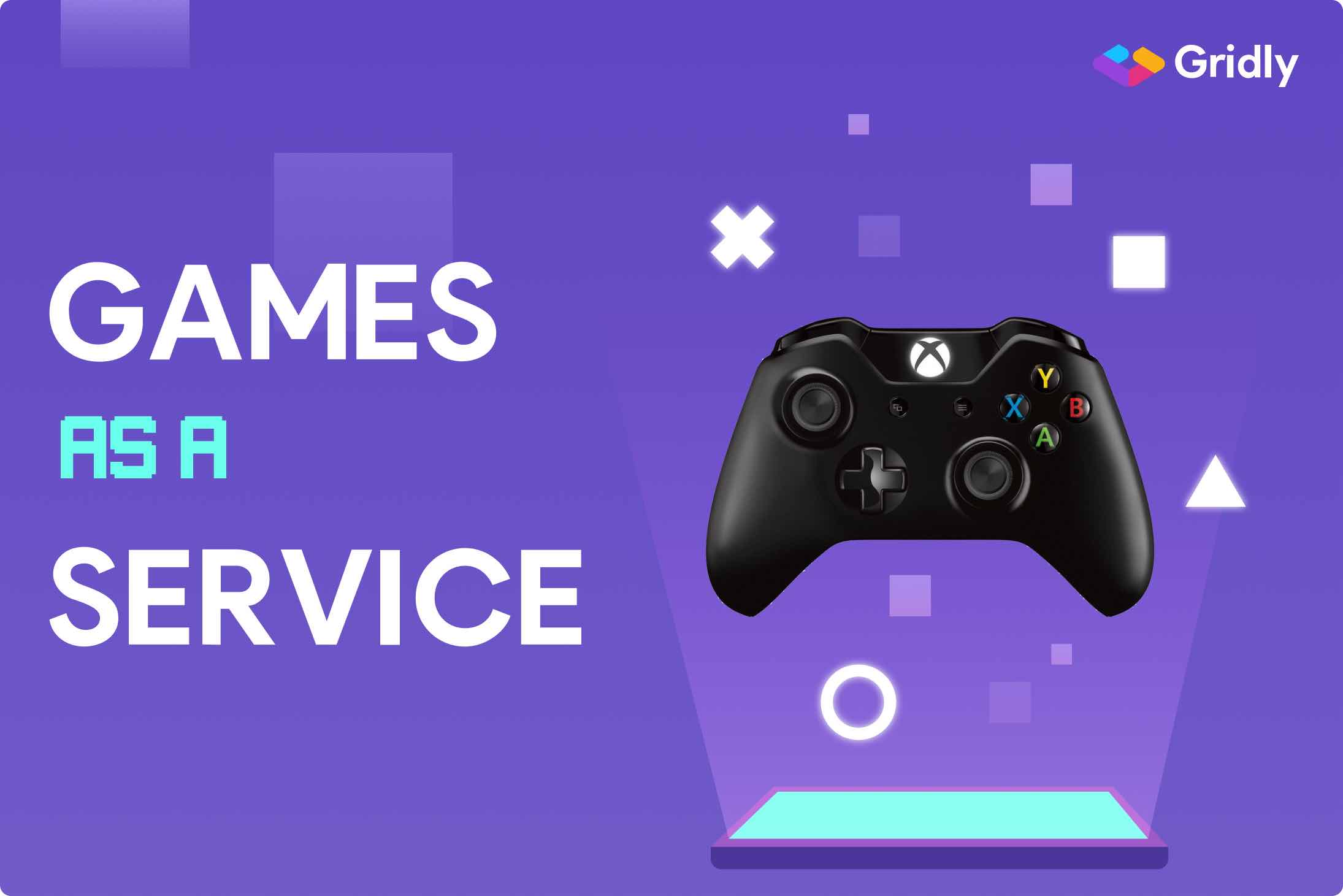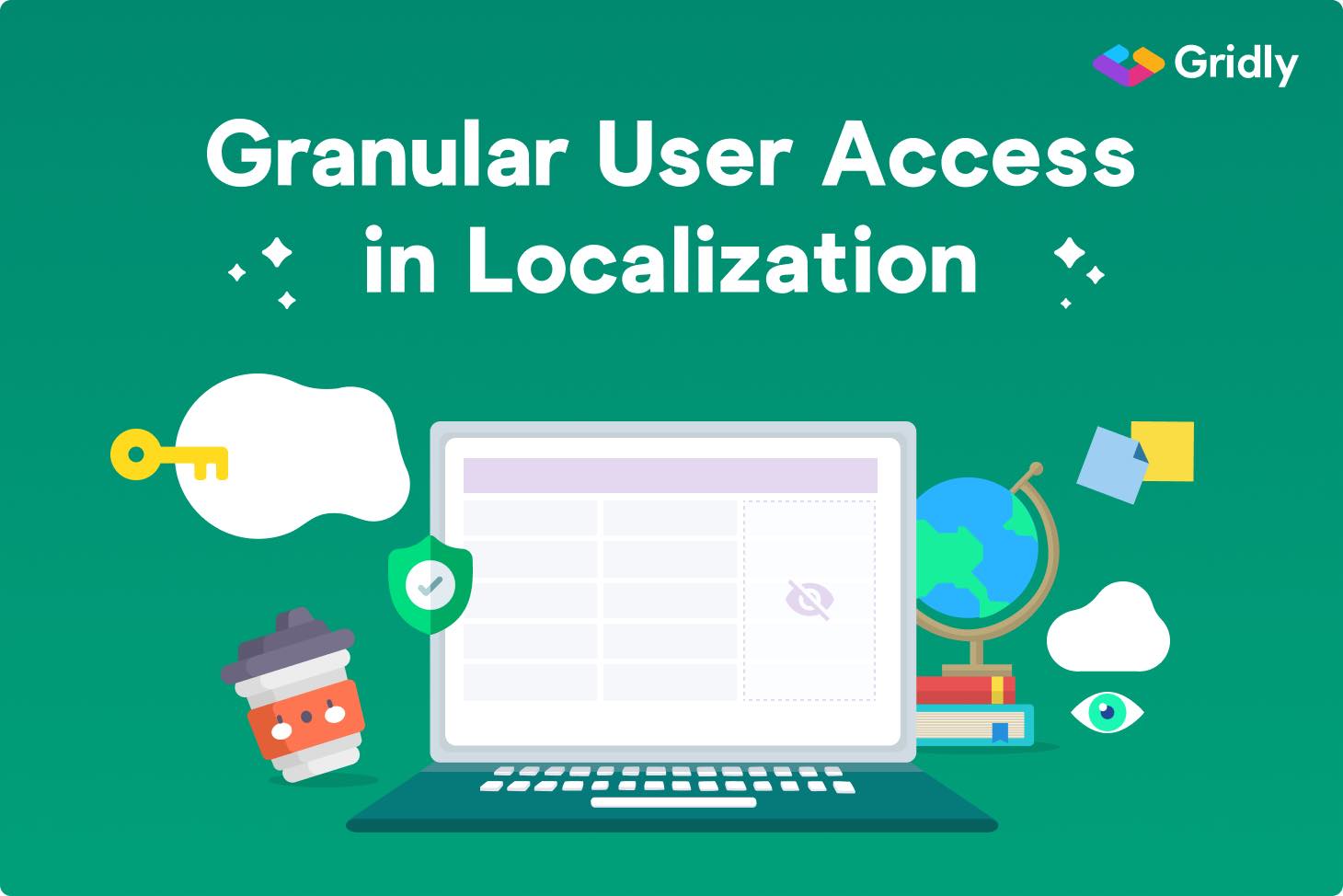What’s covered
- What makes live service game localization different from traditional game localization?
- What are the key milestones in a live service game localization timeline?
- What are the most common problems in live service game localization?
- How can teams stay on schedule with live service localization?
- How does proper tooling empower localization teams?
- How does Gridly support live service game localization workflows?
- FAQs
- Conclusion
When you’re shipping content updates every six to eight weeks, you can’t afford the old waterfall method where translation happens at the end. Your localization workflow needs to be as agile as your development cycle.
Alex from Starbreeze Studios (the team behind Payday 3) recently shared their proven 6-8 week timeline for managing localization across rapid-fire content updates. Here’s how they coordinate developers, narrative designers, translators, and QA teams - all within a tight patch cycle.
What makes live service game localization different from traditional game localization?
Before we dive into the timeline, it’s important to recognize what Alex from Starbreeze calls “the two worlds” of game localization:
World one: Source text development. This is where designers create string IDs in your game engine, writers craft the actual text, and developers hook everything up to the UI. This work happens primarily in-engine and requires technical access.
World two: Translation and localization. This is where your loc team manages versions, vendors translate content into target languages, and LQA teams test for bugs. This work traditionally happens in spreadsheets and translation tools.
The problem? These two worlds rarely talk to each other efficiently. Source text gets updated in-engine without translators knowing. Translations come back from vendors but sit in someone’s inbox. QA finds bugs but can’t easily trace them back to the source strings.
The solution is creating a single source of truth that bridges both worlds. But before we get to how, let’s look at what a proper timeline should look like.
What are the key milestones in a live service game localization timeline?
Here’s what a typical six to eight week patch cycle looks like for live service game localization, with specific milestones that keep everything on track:
Pre-alpha (weeks 1-2)
This is where feature development begins. Designers are building new content, systems, and experiences that will ship in the upcoming patch.
What happens in localization:
- Developers set up string IDs in Unreal Engine for all new UI elements and text.
- Placeholder text gets written directly in-engine (like “temp_button_text” or rough drafts).
- String tables begin populating with these entries.
The key insight from Starbreeze: Developers shouldn’t worry about writing final text at this stage. They simply set up string IDs in the engine and move on. This “set it and forget it” approach means developers can focus on functionality while the actual text gets refined elsewhere by narrative designers and localization teams. The string ID acts as the anchor point that connects the game engine to your localization platform.
Alpha milestone (weeks 2-3)
By alpha, your patch needs to be feature complete. Everything that’s shipping needs to be in the game and functional, even if it’s not polished.
What happens in localization:
- All string IDs should be present in the string tables.
- QA begins testing features (with placeholder text).
- The localization team starts reviewing what strings exist and what will need translation.
Critical point: The text itself doesn’t need to be final at alpha. But the structure needs to be there. Every button, menu, notification, and piece of dialogue that will appear in the final patch should have its string ID set up.
Text lock (weeks 3-4)
Text lock is the moment when your English source text must be finalized. This is the milestone that many teams skip or treat casually - and it’s often what causes the entire localization pipeline to collapse.
What happens at text lock:
- Narrative designers complete their final review of all source text.
- Placeholder strings are replaced with polished, final copy.
- Context is added to strings that need it (more on this below).
- The finalized source text is exported and sent to translation vendors.
As Alex emphasized, “Between alpha and beta is when we have an internal milestone that we call text lock, which means that you need to make sure that all the text that goes with that specific patch is finalized, at least from an English source text perspective, so we can export that file and send it to localization.”
Why this matters: Your translation vendors typically need about one week to return translated files, depending on word count. If you miss your text lock date, you’re eating into the time available for LQA and bug fixing.
Translation period (weeks 4-5)
Once text lock happens, your translation vendors take over.
What happens during translation:
- Vendors translate source text into all target languages.
- The localization team monitors progress and answers any questions.
- Translated files are returned (typically within one week for live service volumes).
Understanding context needs: Translators need context to make accurate choices. A string that says “Fire” could mean “shoot a weapon” or “you’re fired” or “campfire.” Context information helps translators understand the intended meaning and choose the right translation for each target language.
Beta (weeks 5-6)
Beta is when everything comes together. Ideally, you want all translated text integrated into your build by beta so that localization QA can begin testing.
What happens at beta:
- Translated files are imported back into your game engine.
- LQA teams test all languages in-game for bugs, display issues, and accuracy problems.
- The localization team prioritizes bugs based on severity.
As Alex noted, “We aspire to have everything including the localized languages by beta so that then LQA can look at it and we fix as many bugs as we can.” The goal is to have enough time to address critical issues before hardening begins.
Hardening phase (weeks 6-8)
The hardening phase is your final opportunity to fix bugs before the patch ships to players.
What happens during hardening:
- High-priority localization bugs are fixed and retested.
- Lower-priority bugs are documented for future patches.
- Final builds are validated across all languages.
The trade-off: Not every bug will get fixed. You’ll need to make decisions about what ships and what gets deferred. Having clear severity ratings helps:
- Critical: Crashes, game-breaking text, offensive mistranslations.
- High: Immersion-breaking errors, important UI text issues.
- Medium: Minor grammatical errors, cosmetic issues.
- Low: Optimization opportunities, nice-to-haves.
The goal is to ship a patch where no localization bugs are noticeable enough to pull players out of the experience.
What are the most common problems in live service game localization?
Now that you understand what should happen at each milestone, let’s look at where things typically break down. Even with the best intentions, these common pitfalls can derail your entire timeline:
Missed text lock deadlines: This is the biggest killer of live service localization schedules. Features get added late, pushing back when source text can be finalized. Suddenly, you’re sending strings to translators two days before beta instead of a week before. Your vendors rush the work, quality suffers, and LQA has less time to catch bugs.
Placeholder text reaching translators: Imagine your translation vendor charging you $0.15 per word to translate “[TEMP_BUTTON_TEXT]” and “PLACEHOLDER_MISSION_NAME” into twelve languages. It’s not just wasted money - it’s wasted time. When the real text finally arrives, you’re paying to translate everything again, and you’ve blown past your timeline.
Translations not making it into the build: Someone forgets to trigger the import job. Or the timing is off and the translations arrive after the build cutoff. Your beta goes out with English text in half the languages, and LQA can’t do their job. You’ve just lost a full week of testing time.
LQA finding critical bugs too late to fix: When translations aren’t integrated until after beta, LQA discovers a game-breaking bug in German three days before launch. There’s no time to fix it properly. You either ship with the bug, delay the patch, or exclude that language from the release.
Context missing from strings: Your translator sees the string “Wanted: Dead or Alive” and assumes it’s a UI button. They translate it as an instruction rather than recognizing it’s a bounty poster headline. The meaning is completely wrong, but technically, the translation is accurate to the words they saw.
Version confusion across the team: Your engine has one version of the text. Your spreadsheets have another. Your bug tracking system references strings that don’t exist anymore. Your vendor has a third version. Nobody knows what the current truth is, so everyone is working from slightly different information.
These aren’t hypothetical scenarios - they happen to teams every single patch cycle. The good news? They’re all preventable with the right practices.
How can teams stay on schedule with live service localization?
Understanding these pitfalls is the first step. Here’s how successful teams like Starbreeze avoid them and keep their timeline on track:
Enforce alpha as true feature complete
If it’s not in by alpha, it doesn’t ship in this patch. Period. This rule eliminates the biggest source of missed text lock deadlines. When developers know they can’t sneak features in after alpha, they prioritize getting string IDs set up during pre-alpha. Your localization team can then plan with confidence, knowing exactly what needs translation.
Use obvious placeholder patterns
Placeholders aren’t the enemy - they’re actually helpful during early development. The key is making them impossible to miss. Use patterns like “[TEMP]”, “PLACEHOLDER_”, or “XXX_” that are easy to filter and spot. When text lock approaches, your narrative team can quickly run a filter and see exactly what still needs writing. No placeholders slip through to translation because they stand out immediately.
Enforce naming conventions for string IDs
Consistent naming patterns are the foundation of good filtering. When your designers follow conventions like “UI_Shop_Button_Purchase” or “Mission_Heist_BankJob_Title”, you can create filtered views that isolate exactly which strings belong to which feature or patch.
This makes it trivial to answer questions like “which strings belong to the new weapon system?” or “what needs translation for Patch 1.7?” You’re not sifting through thousands of entries - you’re looking at exactly the 200 strings you need.
Automate the sync between engine and localization platform
Manual export-import processes are where things break. Someone forgets. The timing is wrong. Files get corrupted. Automation eliminates these problems. When your CI/CD pipeline automatically exports string tables to your localization platform and imports translations back to the engine, there’s no human error. The process runs on schedule, every time.
Create patch-specific views
Rather than managing one massive string table, create filtered views for each patch cycle. This helps everyone stay focused on what’s actually shipping next. When someone asks “what’s the localization status for Patch 1.7?” you can pull up that specific view and see exactly which strings are translated, which are waiting on vendors, and which still have placeholder text.
Set up context columns in your engine
Don’t make context something your narrative team adds later in a spreadsheet. Set up context columns directly in your game engine’s string tables. When designers create a string, they add context right there: “Tutorial button - action to skip tutorial”, “Character name - keep untranslated”, “Number must fit in 4 digits max.”
This context automatically exports with your strings and travels to your translators. They see it right alongside the text they’re working on. No separate documentation. No guessing.
Use branch strategies for review
Have two branches in your localization platform: an editor branch where raw exports land, and a master branch where only reviewed content lives. Your narrative designer reviews strings on the editor branch, catches placeholders and errors, then merges approved content to master. When you export for translation, you export from master - guaranteeing vendors only receive finalized strings.
Give the right people direct access
Not everyone needs engine access, but everyone involved in localization should be able to see string status. Give your localization producers, narrative designers, and even LQA teams direct access to your localization platform. They can check status, make corrections, and flag issues without waiting for an engineer to export a file.
These practices work because they eliminate the manual handoffs and version confusion that cause most localization problems. But there’s something even more important they enable.
How does proper tooling empower localization teams?
One of Alex’s most important points wasn’t about timing - it was about access. He said, “The good thing about allowing all these processes to happen outside the engine for me, it empowers the team. You stop playing that game where very few selected people can actually have a tangible value-adding benefit into the game.”
Think about the traditional workflow: only engineers can fix localization bugs because only they have engine access. Your localization producer finds a problem but has to file a ticket and wait. Your narrative designer wants to refine some text but needs an engineer to open Unreal and make the edit. Your LQA tester finds a truncation bug in German but can’t fix it themselves.
These bottlenecks are invisible until you remove them. When you do, everything changes:
Your narrative designers work faster. They can refine text without opening the Unreal Engine or waiting for an export. They review strings in a web interface, make changes, and those changes flow automatically into the next build. They’re not blocked by engine access or engineer availability.
Your localization producers catch problems earlier. They can check string status in real time without waiting for someone to export a spreadsheet. They see immediately when a string is missing context or when placeholder text hasn’t been replaced. Problems get caught at text lock instead of at beta.
Your LQA teams can fix bugs themselves. When they find a minor translation error, they can correct it directly in the localization platform. The fix flows into the next build automatically. You’re not wasting engineering time on typo fixes, and bugs get resolved in hours instead of days.
Your developers focus on development. They set up string IDs once and move on. They’re not constantly being pulled into localization issues. They’re not the bottleneck for every text change. They can focus on building features while the loc team manages the text.
The timeline works because the right people can do the right work at the right time - without stepping on each other’s toes or waiting for handoffs. But this kind of empowered workflow isn’t possible with manual processes and spreadsheet shuffling. It requires infrastructure that’s purpose-built for the job.
How does Gridly support live service game localization workflows?
The Starbreeze timeline works because they’ve built automation and accessibility into every step. Here’s how their technical stack keeps everything moving without manual handoffs:
The foundation:
- Unreal Engine: Where source text originates and string IDs live.
- Gridly: The single source of truth that mirrors Unreal’s string tables and manages all versions, translations, and metadata.
- Jenkins: The CI/CD tool that automates the export from Unreal to Gridly and the import from Gridly back to Unreal.
The workflow looks like this:
- Developers set up string IDs in Unreal Engine.
- Automated Jenkins job exports string tables to Gridly.
- Narrative designers review and finalize text in Gridly.
- Localization team exports filtered views to translation vendors.
- Translated files are imported back into Gridly.
- Automated Jenkins job imports from Gridly back into Unreal Engine.
- Gridly’s data overwrites whatever was in Unreal, ensuring consistency.
Let’s look at exactly how Gridly’s features solve each of the pitfalls we discussed and enable the best practices that keep you on schedule:
Pre-alpha to alpha: automatic sync and placeholder management
The problem: Developers are creating string IDs rapidly, often with placeholder text. You need visibility into what’s being created without slowing down development or waiting for manual exports.
How Gridly solves it: When you connect Gridly to Unreal Engine through your CI/CD pipeline, every string table export automatically syncs to Gridly through direct API integration. Developers never need to leave their engine - they simply set up string IDs and write placeholder text as part of their normal workflow.
Gridly mirrors your entire string table structure, automatically inheriting all metadata columns from Unreal Engine. This means fields like “context,” “character limits,” or “do not translate” flags automatically appear in Gridly without any manual setup.
For producers and narrative designers who don’t have engine access, this is transformative. They can log into Gridly and see exactly what strings exist, which ones are placeholders, and what’s ready for review - all in real-time without waiting for someone to export a spreadsheet or grant them access. Smart automations in Gridly let you flag placeholder strings for review with just a few clicks, making it easy to track what still needs attention before text lock.
Text lock: branch strategies and version control
The problem: You need to ensure only finalized, reviewed strings reach your translation vendors. Placeholder text and work-in-progress content should never get exported for translation.
How Gridly solves it: This is where Gridly’s branching system becomes critical. Starbreeze uses a two-branch strategy that gives them complete version control over their localization workflow:
- Editor branch: This is where all automated exports from Unreal Engine land. It’s the raw, unfiltered view of your string tables. Placeholder text, half-finished strings, and everything else sits here first.
- Master branch: This is your single source of truth. Only reviewed, finalized strings live here. Your narrative designer reviews strings on the editor branch, then merges approved content to master.
When it’s time for text lock, you export from the master branch - not the editor branch. This ensures vendors only receive strings that are ready for translation. Gridly’s branch comparison feature shows you exactly what changed between branches in a visual diff view. You can see new strings that were added, existing strings that were modified, and deleted strings - all with merge workflows that include review capabilities. This makes the review process fast and ensures nothing slips through. You can also use filtering to isolate strings by status or readiness, making it easy to focus on exactly what needs attention.
Translation period: filtered exports and vendor management
The problem: You need to send only relevant strings to translators - not your entire string table. You also need to provide context and metadata that helps translators make accurate choices.
How Gridly solves it: This is where Gridly’s filtering and view system shines. Rather than working with one massive string table, you can create multiple filtered views based on any criteria you need using advanced filtering based on any column data.
For example, Starbreeze creates patch-specific views. When they’re preparing Patch 1.7 for translation, they create a filtered view that only shows strings for that patch. They use naming conventions in their string IDs (like “Patch17_Feature_WeaponSystem_ButtonLabel”) and filter based on those patterns. These reusable views work for recurring patch cycles, so you don’t need to set up filters from scratch each time.
You can also filter by date added (only strings created since the last patch), translation status (untranslated strings only), feature tags (if you use metadata columns to categorize content), string length (isolate short UI strings vs. longer narrative content), or custom flags (strings marked “ready for translation”).
Once you’ve created your filtered view, exporting is simple. Gridly can export to CSV, Excel, XLIFF, or any format your translation vendors prefer through multi-format export options. The export includes all the metadata columns you’ve set up - including the critical context column that tells translators how to interpret ambiguous strings, ensuring context travels with every export.
When translations come back from vendors, you import them directly into Gridly. The platform’s smart import automatically matches translated strings to their source entries based on string ID, updating only the language columns without touching your source text or metadata.
Beta and LQA: real-time bug fixes and quick turnarounds
The problem: LQA finds bugs in translated text. In a live service game localization timeline, you need to fix these bugs in hours or days - not weeks. But traditional workflows require editing files, sending them back through your entire pipeline, and rebuilding.
How Gridly solves it: When an LQA bug comes in - “German string for ‘Daily Reward’ is truncated in the UI” - your localization producer can use instant string search by ID or content to find the problem immediately. They see the string, the translation, and can identify the issue right away.
If it’s a simple fix, they can use direct editing with change tracking to correct the translation in Gridly. If it needs to go back to a translator, they can flag it and include it in the next micro-batch of updates.
Because Gridly is your single source of truth and overwrites your Unreal Engine string tables on import, the fix path is straightforward:
- Edit the string in Gridly.
- Trigger your Jenkins import job.
- Gridly pushes the corrected translation to Unreal through automated sync to the game engine via CI/CD.
- The next build includes the fix.
This can happen in minutes rather than days. As Alex noted, “You can quickly type the string ID on Gridly and see what’s the status. Sometimes maybe the string somehow was missed to be sent to localization and you can quickly fix that.”
For teams that want even faster turnaround, Gridly supports user access controls for QA teams. Your QA testers can log into Gridly, search for strings by ID, and make corrections themselves - no file exports or email chains required. The fixes flow automatically into your next build. An audit history shows who changed what and when, so you always have complete visibility into every change.
Hardening: status tracking and final validation
The problem: You need complete visibility into what’s been fixed, what’s still outstanding, and what’s been deferred to the next patch. With multiple languages and hundreds of strings, tracking this manually is impossible.
How Gridly solves it: Gridly’s custom metadata columns for status tracking let you track the lifecycle of every string. You can add columns like “Bug status” (open, fixed, verified, deferred), “Severity” (critical, high, medium, low), “Target patch” (1.7, 1.8, backlog), “Last modified date” (automatic tracking), or “Modified by” (automatic tracking).
This gives you a dashboard view of your entire localization status using multi-level filtering for reporting. You can filter to see “all critical bugs for German” or “all deferred strings for next patch.” When stakeholders ask “are we ready to ship?” you can pull up Gridly, export reports for stakeholder review, and show them exactly what the status is.
Gridly also maintains a complete audit history and version tracking. Every change to every string is logged with timestamp and user information. If something breaks between builds, you can see exactly what changed and use rollback capabilities for problematic changes if needed.
The single source of truth principle
This is the foundation that makes everything else work. As Alex explained, “If it’s correct on Gridly, it will show up correctly in game.”
When your source text lives in the engine, your translations live in spreadsheets, your context lives in documentation, and your bug fixes live in email threads, nobody knows what the current truth is. Version confusion isn’t just annoying - it causes real bugs that reach players.
With Gridly as your single source of truth:
- Developers know where to find the latest string tables.
- Narrative designers know where to finalize text.
- Localization producers know where to check translation status.
- QA knows where to log bugs and verify fixes.
- Translators know where to find context and metadata.
Everyone works in one system. The data flows bidirectionally between your game engine and Gridly, but Gridly always overwrites the engine on import. This means your localization team has the authority to ensure text accuracy without needing engine access or engineering support for every small change.
The bottlenecks disappear. The version confusion disappears. The manual handoffs disappear. What’s left is a workflow where the right people can do the right work at the right time, and everyone stays in sync automatically.
FAQs
Let’s recap some of the most common questions teams ask when implementing a live service game localization timeline:
How long should a live service game localization timeline be?
A typical live service game localization timeline runs 6-8 weeks to match standard patch cycles. This includes pre-alpha (weeks 1-2), alpha (weeks 2-3), text lock (weeks 3-4), translation (weeks 4-5), beta (weeks 5-6), and hardening (weeks 6-8). Teams shipping more frequent updates may compress this timeline, but the key milestones remain the same.
What is text lock in game localization?
Text lock is the milestone when all English source text must be finalized and ready to send to translation vendors. It typically occurs between weeks 3-4 of a patch cycle. Missing text lock is the most common reason localization timelines fail, as it compresses the time available for translation, LQA testing, and bug fixes.
What does LQA mean in game localization?
LQA stands for localization quality assurance. It’s the process of testing translated text in-game to catch bugs like truncated text, display issues, grammatical errors, and mistranslations. LQA teams test all target languages in actual game builds, not just in spreadsheets, to ensure translations work correctly in context.
What’s the biggest mistake teams make with live service localization?
Missing text lock deadlines is the biggest killer of live service localization schedules. When features get added late or source text isn’t finalized on time, teams end up rushing translations days before beta instead of a week before. This compresses LQA testing time, reduces translation quality, and often results in shipping with bugs or excluding languages from the release. The solution is treating alpha as true feature complete - if it’s not in by alpha, it doesn’t ship in that patch.
What tools do you need for game localization?
At minimum, you need: a game engine with string table support (Unreal, Unity, etc.), a localization management platform like Gridly, CI/CD automation tools (Jenkins, GitHub Actions, etc.), and access to translation vendors or TMS systems. Advanced setups include context screenshot tools, terminology management, and automated QA checking.
Conclusion
Live service game localization isn’t easy, but it is manageable when you have clear milestones, proven practices, and the right infrastructure. The six to eight week live service game localization timeline from Starbreeze gives you a proven framework:
- Pre-alpha: Set up string IDs and structure.
- Alpha: Achieve feature complete with all strings present.
- Text lock: Finalize English source text and send it to translation.
- Translation: Give vendors the time they need (typically one week).
- Beta: Integrate translations and begin LQA.
- Hardening: Fix critical bugs and prepare to ship.
The key is treating localization as a parallel workflow that runs alongside development - not something that happens at the end. With proper automation, version control, and a single source of truth, you can ship high-quality localized content on the aggressive schedule that live service games demand.
Understanding the complete game localization process and how each milestone connects is essential for success. Gridly provides the infrastructure to make this timeline work: direct engine integration, branching and version control, filtered views for patch management, real-time editing capabilities, and the automation hooks to keep everything moving without manual handoffs.
Ready to transform your live service localization workflow? Start your free trial today to experience how Gridly streamlines every milestone in your patch cycle, or book a demo to see how teams like Starbreeze are localizing at the pace of live operations.
Want to see the complete workflow in action? Watch the full webinar session where Alex from Starbreeze walks through their entire live service localization process with Gridly, including live demonstrations of the Jenkins integration and real-world examples from Payday 3.
